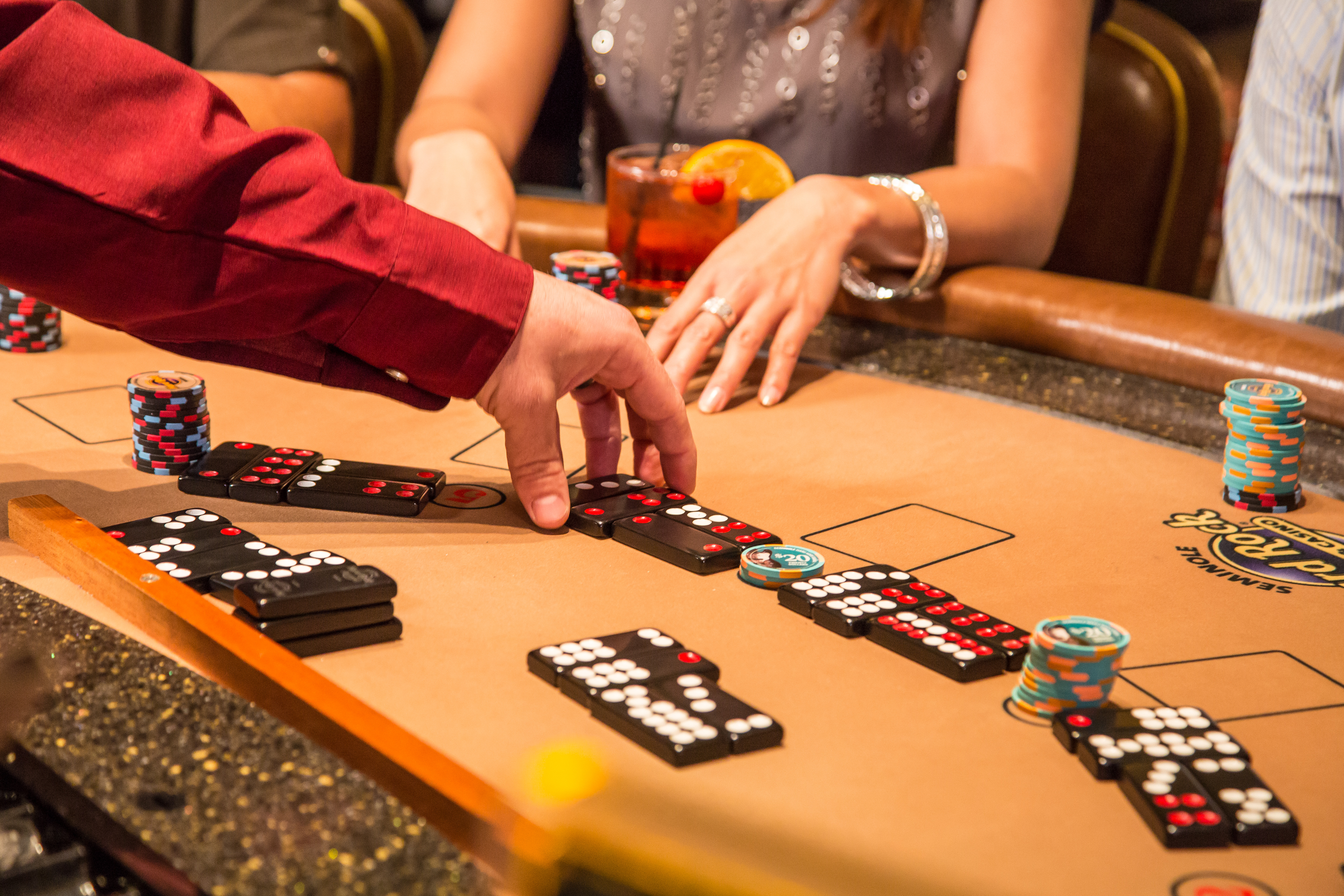Pai Gow Tiles is a game of Chinese dominoes that originated in Ancient China and is played in most Asian Countries. Translated into English, Pai Gow means “to make nine.” It is played with 32 dominoes (also referred to as tiles) –11 of which are identical pairs. This game is located specifically in Jubao Palace inside the Seminole Hard Rock Hotel & Casino Tampa.
OBJECT OF PAI GOW
The Object of Pai Gow Tiles is to make 2 “ranking” hands using 4 dominoes (2 dominoes per hand). The 2 hands consist of the “high hand” and the “low hand.” In order to win, the player’s rankings in both hands must be higher than the bank’s. For the bank to win, its rankings must be higher than the players. If the banker wins one and the players the other, the hand is a standoff (“push”). If the bank and player have the same ranking hand and their highest ranking individual dominoes (tiles) are also the same, then the banker wins. This is known as a “copy hand”.
TIPS FOR SETTING UP PAI GOW HANDS
Pairs- Always look for pairs first. Don’t forget Gee Joon (1-2 and 2-4) and mixed pairs
Wongs and Gongs- Play a 12 or 2 domino with any 9 or 8 domino
Nine or Eight- Play any domino that total nine or eight
Average- If none of the above can be found, average the dominoes by playing the highest domino with the lowest domino.
Ranking- If possible, try to play the highest ranking domino in the low hand.
House Way- If undecided, ask the dealer to set up the hand the house way.
TRICKS FOR RANKING THE DOMINOES
In order to play Pai Gow Tiles, it is necessary to know the ranking of the dominoes. The ranking do not follow a number sequence (i.e., highest to lowest) but are symbols to the Chinese. For example, the highest ranking domino is twelve while the second highest is the two (see Single Ranking Chart). The highest ranking hand in Pai Gow Tiles is a combination of domino six (white 2 red 4) and domino three (white 2, red 1). This pair is called “Supreme” (Gee Joon). The 2nd through the 12th ranking hands are the “Matched Pairs” (Bo) and the 13th through the 16th ranking hands are the “Mixed Pairs” (Chop Bo) (see Pair Ranking Chart). These pairs rank in the same order as the individual dominoes. “Wongs” are ranked next, 17th and 18th. A “Wong” is a twelve (teen) domino and any domino having a value of nine, or a two (day) domino and any domino having a value of nine. “Gongs” are the next ranking 19th and 20th. A “Gong” is a twelve (teen) domino and any domino having a value of eight, or a two (day) domino and any domino having the value of eight.
If none of the above rankings can be made, hands are formed by ranking dominoes from nine to zero. This is done by adding the dominoes together. If the value of the two dominoes (tiles) totaled is a two digit number, the left digit is discarded and the right digit constitutes the value of the hand. For example, the dominoes 8 and 11 added together make 9. The dominoes 7 and 6 make 3. These types of rankings are the most common in Pai Gow Tiles. When the banker and player have the same ranking hand by number, the hand that has the higher ranking single domino will win (see Single Ranking Chart). The dominoes 6 (2-4) and 3 (1-2) together make the highest ranking hand; the “Supreme Pair”. If the tiles which form the “Supreme Pair” are used separately, the numeric total of the 6 (2-4) may be counted as a 3 and the numeric total of the 3 (2-1) may be counted as a 6. When the 3 (1-2) is counted as a 6, its individual ranking shall be fifteenth instead of seventeenth. When the 6 (2-4) is counted as a 3, its individual ranking shall be seventeenth instead of fifteenth. Remember, look for these two dominoes when trying to make 9’s.
Information courtesy of Seminole Hard Rock Hotel & Casino Tampa

